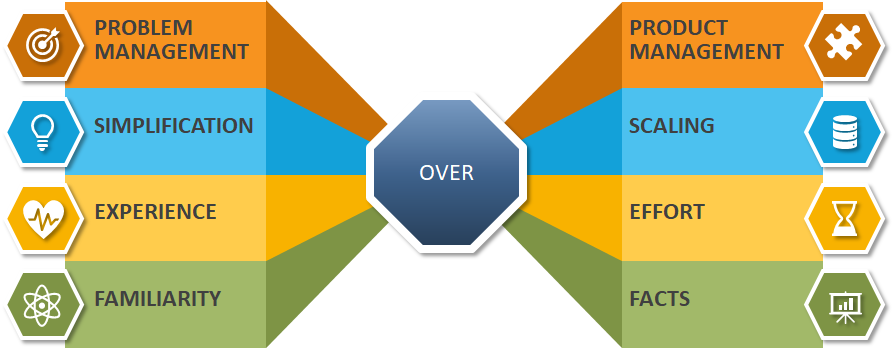The Product Manager is a strategic role, and it encompasses several aspects that need to be taken care of. As a Product Manager, one doesn’t immerse oneself entirely in feature creation but focuses on problem-solving with an experience that makes users stick to the product without hesitation.
Product management is already elegant and popular. But not yet a very well defined function. It is different to different people. But, there is certainly a common ground. In addition to that, what would it be if we have a manifesto for product optimization along the lines of the Agile manifesto? Could it be something like the below?

Problem Management over Product Management:
When working on product management aspects, there are certain problem boundaries in which the Product Manager operates. They work with an identified problem (often by somebody else) and march towards solution-ing. So the scope becomes pretty limited in what one can do. But if someone is in problem management, they have more chances to identify the problems, select the problem to address first based on the rationale, and get someone to work on it. This helps one have a clear vision and communicate it well to all the stakeholders. Not that Product management is less worthy, but Problem management could be the superset of that.
“If you know the enemy and know yourself, you need not fear the result of a hundred battles. If you know yourself but not the enemy, for every victory gained you will also suffer a defeat. If you know neither the enemy nor yourself, you will succumb in every battle”― Sun Tzu, The Art of War
Simplification over Scaling:
Do all the organizations have some loud and demanding customers? That’s probably a common known. Often, they come up with a lot of requests and try to impose their thoughts. The product manager got to oblige as these customers contribute to their bottom line significantly. They might overshadow the real needs. Over a period, the product grows with several such features and could cause customer dissatisfaction.

Experience over Effort:
The principle of least effort is a psychological principle that influences us all. We often choose something over another based on the effort involved in reaching the anticipated end goal. In the process, we trivialize the user experience factor. Considering UX debt later in the product lifecycle is difficult to crack. So is the user experience, just like how the design freedom is high in the early stages. The user experience journey should be a parallel process. Address the right need and address it right!
A pound of lead or a pound of feathers? — What weighs more?
Familiarity over Facts:
Data, while being very useful, can be fallacious. The context and environment in which the measurements play a vital role in deciding the near and long-term course of action. For example, customer or user satisfaction is paramount, and many organizations take this very seriously. However, in showcasing the business as reliable with happy customers, they employ not-so-worthy methods. Have you seen instances of organizations offering perks (like extended warranty or freebies) for giving them the highest satisfaction score? But is that an accurate date to use?

In conclusion, the idea is simple. A Product Manager should Have a problem first mindset and NOT a solution first mindset. Keep the context in context while using the data for decision making. Use opportunities for customization through configuration and not based on individual customers. And nothing should outweigh the customer/ user experience.